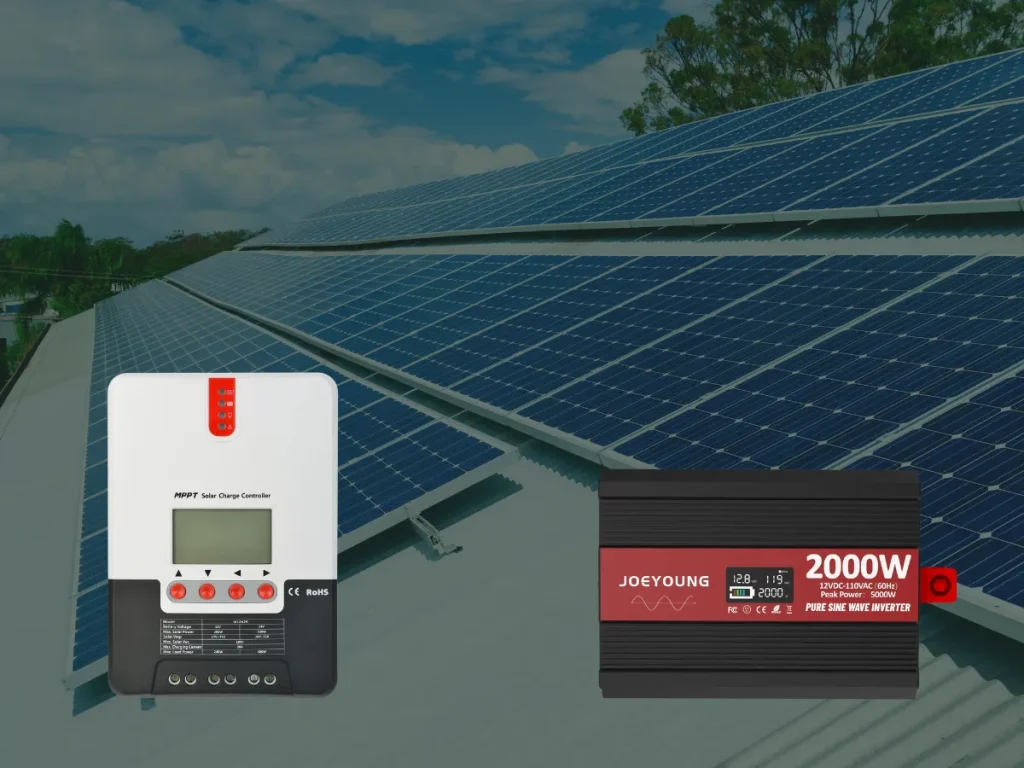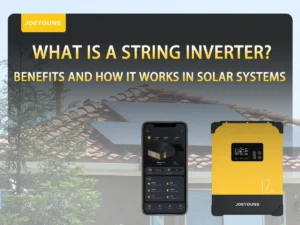If you know what size of inverter do I need, then finding the most effective inverter application for you is in a 2000-watt inverter, knowing the information about it is the top priority, so that you can enjoy the clean energy without interruption.
The 2000-Watt inverter can be a game changer for you looking for a safe, green, modern, and scalable power that can run your appliances at home, RV, boat, or anywhere, supporting your mobility and productivity.
Before diving into the question “what can I run on a 2000-Watt inverter?”, let’s review the basics, inverter types, and several facts you need.

What Is a 2000-Watt Inverter?
A 2000-Watt inverter is an electronic device crucial in converting power from renewable technology. It converts the current sourced from a solar panel and battery, which is direct current (DC), into alternating current (AC) using the internal components such as an inverter transistor and an inverter capacitor to generate.
Types Of 2000-Watt Inverters
The two main inverter types for the model 2000-Watt are pure sine and modified sine.
- What is a pure sine wave inverter: An inverter that generates a stable, clean, and most similar to the grid’s current. Pure sine waves have a wide range of applications. This kind of inverter is perfect for powering sensitive electronics such as computers, laptops, and more modern electronics that need a high-quality waveform, just like Joeyoung pure sine wave inverters.
- Modified sine wave inverter: A modified sine wave inverter is designed to produce a rougher waveform, exclusively for several electronics that don’t need a certain wave in a cost-efficient way. For further information, refer to the Joeyoung 2000-Watt modified sine wave inverter.
Refer to pure sine wave vs modified sine wave for detailed information about both inverters.

The Working Principle Of A 2000-Watt Inverter
We can note that the core of the 2000-watt inverter generates DC into AC, so it can be used to power the appliances you need.
It starts with an electronic oscillator that receives the DC input from the solar panel or battery and feeds it into the transistor. The transistor (like MOSFETs or IGBTs) rapidly switches on and off the pattern in a roughly similar pattern to an AC pattern. After the switching process, the current is filtered by a capacitor to smooth the AC so that the AC output is ready to use.
Besides that, the excess current can be stored in the battery if you also install a battery.
2000-Watt Inverter Wiring
When you perform an installation process, wiring the cable can contribute to how efficiently the inverter generates the current. The size of the inverter cable depends on how far the battery, solar panel, and the inverter are.
For the distance between the 2000-Watt inverter and the battery within 3 to 6 feet (under 10 feet), you can choose a size of 2/0 AWG. Then, if you plan to install over a longer distance, for example, more than 10 feet but under 20 feet, be sure to choose 00 AWG or 4/0 AWG.
The inverter wiring can be determined by the voltage of the DC and AC. For the DC side, you can use 2/0 AWG for a 12VDC system, 4/0 AWG for a 24VDC system, or 6/0 AWG for a 48VDC system.
What Can I Run On A 2000-Watt Inverter?
We already know the basics of a 2000-watt inverter, let’s find out what can I run on a 2000-watt inverter. The first thing we should know is the surge capacity. Before using the inverter, ensure it can handle the surge capacity spike. So, using a small amount of electronics with power is within the inverter’s capacity is recommended.
So, what can I run on a 2000-watt inverter?

There are several standard household devices that you might need to run that can be powered by a 2000-watt inverter, such as LED Lights (typically under 100W), laptops/computers (50- 100W), a TV (100- 200W), a small blender (300- 600W), and a Cell phone charging (20-50 W).
For example, a 2000-watt load distribution can run a small refrigerator (150- 200W), an LED TV (100-200 W), a small fan (60-100 W), and a laptop (50-100 W) at the same time.
You can maximize the use of a 2000-Watt inverter by managing the load carefully, using energy-efficient devices, turning the device on and off one by one, and constantly checking the electronics’ surge power.
How Many Batteries For a 2000-Watt Inverter
The amount of batteries required to run a 2000-watt inverter depends on several factors, such as inverter voltage, battery voltage, battery capacity, run time, and efficiency. A Joeyoung inverter has 98% efficiency in conversion, which is the highest in its class.
For instance, to power electronics for 2 hours, you can choose between 12V, 24V, or 48V. If you decide on 12V, the required battery capacity is 370 Ah, so you need four batteries. If you choose 14V, the required capacity is 185 Ah, so you need two batteries. Last, if you select a 48V, the capacity required is 92.6 Ah; you need one battery.
How Many Solar Panels Do I Need For A 2000-Watt Inverter?
To determine how many solar panels are needed to power a 2000-watt inverter, we can consider several crucial factors, starting from the wattage of each solar panel, the amount of sunlight available per day, inverter efficiency, and battery storage.
For example, if you’re using a 200W solar panel, the sunlight shines for 5 hours so that each panel can produce 1 kWh daily. If you need 10 kWh for daily use, you need 10 panels.

How to Choose the Best 2000-Watt Inverter
Joeyoung Inverter Manufacturer is a prominent and trustworthy manufacturer based in China. For the past eighteen years, Joeyoung has dedicated all its resources to handling a hundred thousand clients’ problems, researching, and developing the inverter technology so it can be tailored to the client’s needs.
Frequently asked questions
Most inverters can work with lead acid or lithium-ion batteries; it is recommended to use a Tycorun lithium-ion battery for an efficient and longer-lasting performance. The lead-acid battery is a more budget-friendly option but requires more frequent maintenance and has a shorter lifespan.
Since typically an air conditioner requires more power, a 2000-watt inverter might struggle to run. You can run the appliances if the surge capacity is what it can handle.
To extend the life of an inverter, you need to ensure it is not overloaded by running too many devices simultaneously. Keep all the systems in a ventilated area, use high-quality wiring, and perform regular maintenance checks.

Regarding solar power utilisation, several inverter types may be an option, but what is a string inverter? Why can it be the perfect match to optimize the solar systems? This article will give you the information that you need.

This article will dive into the role of IGBT and MOSFET inverters, the pros and cons, and each distinct characteristic.

This article answer the question “what can I run on a 2000-Watt inverter?” and several important information.
Authors

Passionate to education and renewables energy make me enthusiast about making complex technologies accessible to everyone by translating it into a practical and easy to understand. Let's learn and grow together!
View all posts

hi I am Jim, an inverter specialist with over 10 years of experience. I previously worked as an R&D engineer at a leading energy company, focusing on inverter design, optimization, and system integration. I have been involved in the development of key technologies and gained comprehensive expertise in both technical innovation and practical applications.Currently, I focus on professional writing to provide clear analysis and practical insights into inverter technology, contributing to its advancement and broader adoption in the industry.
View all posts


